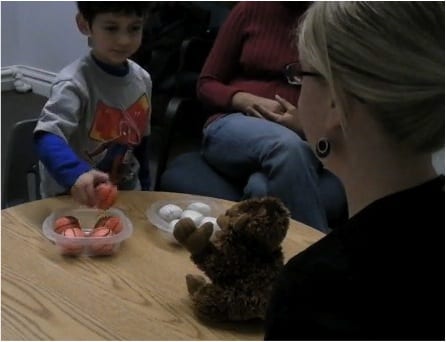Preferences, Choices, and Thinking about Thinking

Laura Garvin
Doctoral Student
We are interested in how young children learn to use a person’s actions and behavior to reason about what that person might be thinking, and how they can use this information to anticipate their social partners’ future thoughts and behavior. We have been looking at these questions specifically in the context of children’s understanding of others’ preferences – what people like and dislike.
 In one line of studies, we investigate children’s ability to reason about a character’s preferences by tracking the statistical regularities in the character’s choices. When children observe a character repeatedly choosing an uncommon toy from a box containing a lot of one kind of toy and very few of another, do children infer that the puppet likes this uncommon toy? We also explore how children’s interpretations are affected by the way the character’s choices are introduced by the experimenter and children’s own theories about how preferences work, as well as how children’s inferences change from preschool age through early childhood.
In one line of studies, we investigate children’s ability to reason about a character’s preferences by tracking the statistical regularities in the character’s choices. When children observe a character repeatedly choosing an uncommon toy from a box containing a lot of one kind of toy and very few of another, do children infer that the puppet likes this uncommon toy? We also explore how children’s interpretations are affected by the way the character’s choices are introduced by the experimenter and children’s own theories about how preferences work, as well as how children’s inferences change from preschool age through early childhood.
Once children know what a person likes, what other kinds of inferences can they make about that person? We have been exploring whether two-year-old children think a person’s preferences will transfer to new situations and older children’s ability to generalize a character’s preferences to other objects, points in time, and characters.
Through this work, we can gain insight into the kinds of information and processes children use when learning about others’ mental states, and how they use these skills to become successful navigators of their social world.
Publications
- Garvin, L. & Woodward, A. L. (in press). Verbal framing of statistical evidence drives children’s preference inferences. Cognition.